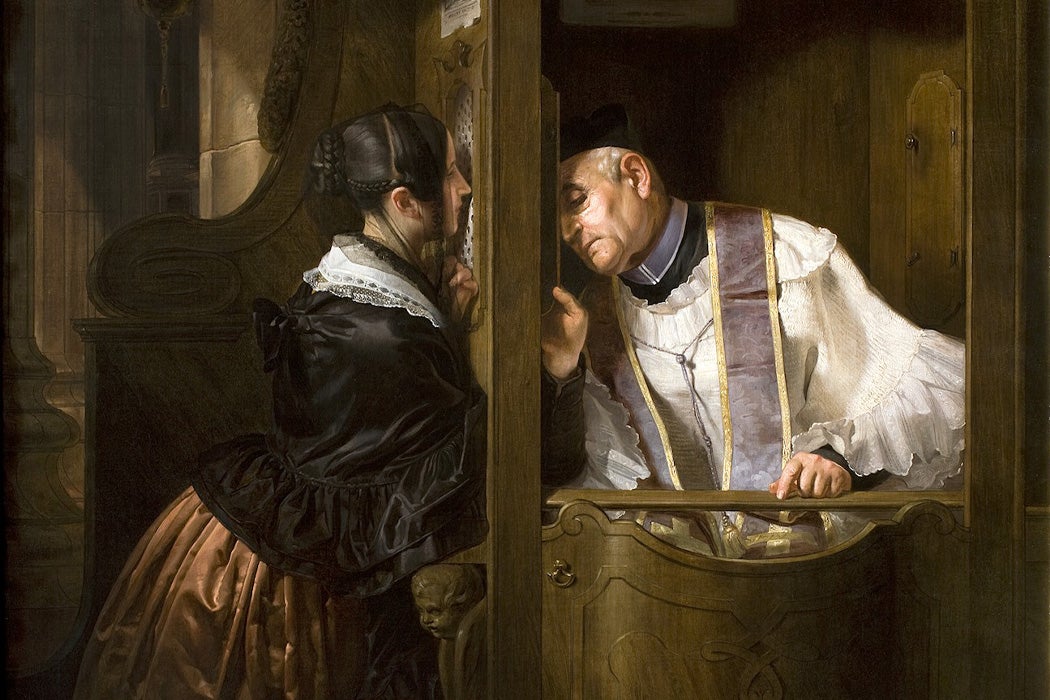Nowadays, having scruples means making good, moral choices. But as historian Joanna Bourke writes, in the first half of the twentieth century, scruples represented an unhealthy obsession with avoiding sin. Examples of scruples can be found among Protestants, Jews, and Muslims, but Bourke writes that in the U.S. and Britain, the phenomenon was most common among Roman Catholics.
Bourke writes that scrupulous people might worry that they had profaned rosary beads by touching them with dirty hands. Some feared that breathing represented stealing air that didn’t belong to them.
Surveys of Catholic students in the 1940s and ‘50s found that a quarter of those in high school, and one in seven in college, were scrupulous. One woman named Priscilla O’Brien Mahoney described her own scruples, which began when she was a child in the 1920s. During her First Communion, she was gripped by terror that she might fail to confess a sin:
“I hit on the idea that I would be reasonably safe if I simply admitted that I broke at least nine of the ten commandments! Murder was the only crime I felt almost sure I could omit. And yet, even this reservation gave me a few momentary qualms as I recalled that my mother had often said, I’d be the death of her if I didn’t keep my room neat.”
As an adult, Mahoney reports that she spent days before each confession cataloging her sins, and then sweated and shook uncontrollably in the confessional box.
Bourke writes that priests understood scruples to be both incorrect and dangerous. Starting in the mid-nineteenth century, the image of God presented by American Catholic authorities had shifted from a punishing authority to a loving father. A scrupulous person who was terrified of praying wrong might cease praying altogether, and would not experience God’s grace and peace.
According to Bourke, Catholics understood scruples as a problem for priests to address. They might explain to a scrupulous parishioner that anything unavoidable, like involuntary thoughts, could not be sinful. In some cases, they might recommend avoiding self-examination and finding more activities and distractions. “If one is deprived of the joys of the spirit, one will very soon seek the pleasures of the flesh, to help compensate for his loss,” Franciscan Ernest F. Latko wrote in 1949.
Weekly Digest
An alternative view of scruples came from physicians, who sometimes viewed them as a form of neurosis or psychosis. It didn’t help that Freud diagnosed all religion as a “universal obsessional neurosis.” The Church fought back against this idea, largely on the grounds that it was impossible for secular doctors to distinguish scruples from legitimate guilt.
Some Catholics tried to bridge the approaches with a specifically Catholic psychiatry, or by training priests in psychology. But, by the 1970s, scruples were becoming less common anyway. The relaxation of Church authority after the Second Vatican Council seems to have reduced Catholics’ anxiety, while members of an increasingly secular society were becoming more likely to view upsetting obsessions through a medical lens.








[…] An Unhealthy Obsession with Avoiding Sin […]